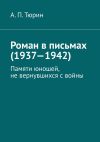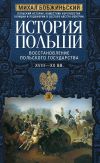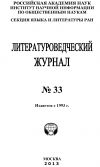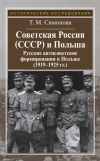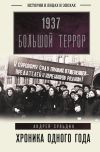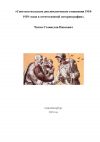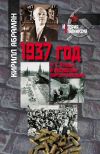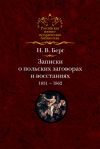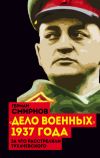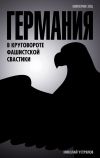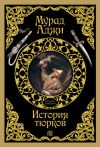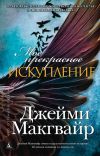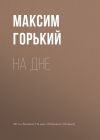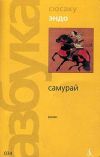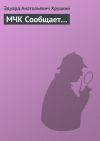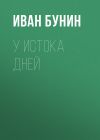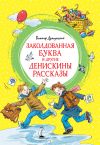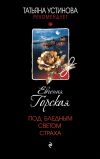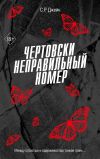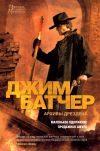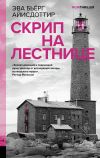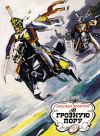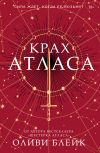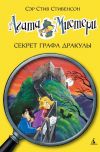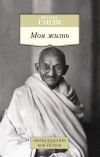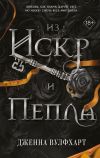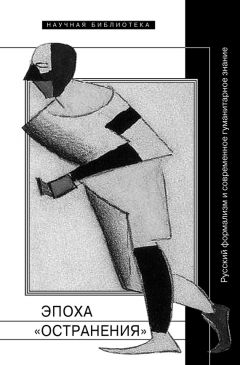
Автор книги: Коллектив авторов
Жанр: История, Наука и Образование
Возрастные ограничения: +18
сообщить о неприемлемом содержимом
Текущая страница: 12 (всего у книги 50 страниц) [доступный отрывок для чтения: 14 страниц]
The polish reception of reception:
The Transfer of priem within the Intellectual Morphic Field of Russian and Polish Formalisms[81]81
This article is an output of the project “A Century of Theory. One Hundred Years of Theoretical Research in Poland” supported by the Polish National Science Centre (NCN 2014/13/B/HS2/00310).
[Закрыть]
Michał Mrugalski
In this paper, I focus on the circumstances in which the theoretical work of the Russian Formalists could have been so enthusiastically and yet critically received by Polish literary scholars of the 1930s, who perceived the Russian inventions in literary studies that had been made a decade ago as pertinent to the then current climate in the cultural discourse in Poland: translation, promotion, and the development of Russian theoretical ideas seemed to be a primary task for Polish literary scholars at the time [Markiewicz, 1986; Dutka, 1998]. In Poland, the young scholars from Wilno/Vilna/Vilnius and Warsaw held a minority position but it was their work on rendering an original Polish school of “aesthetic” studies – in which the legacy of Russian Formalism should take on a prominent position – that shaped literary theory in Poland after WWII. An anthology of Polish translations from the Russian formalists that the young scholars prepared throughout the thirties was planned as a second manifesto of the Polish school, a complement to the first one: To Honor Kazimierz Wóycicki [Prace, 1937] Thus, the legendary Polish forerunner of the formal method Kazimierz Wóycicki, who spread proto-formalistic or proto-structural ideas in Poland as soon as in 1914, was to be reinforced by his Russian younger counterparts in a role of Polish Formalism’s patron saint [cf. Budzyk, 1949: 44]. The prepared anthology was only partly printed and never distributed. Instead, it became a Schicksalsgenosse to the tragic generation of the Polish formalists: the most of the edition burnt in September 1939, the rest vanished together with the Warsaw Ghetto in 1943, and the only surviving copy shared the faith of the whole city razed to the ground by Germans in an act of revenge for the Warsaw Uprising 1944 [Żółkiewski, 1989; Mayenowa, 1970; Ulicka, Adamiak, 2008].
In this paper, I specifically shed some light on the intellectual milieu of Central and Eastern Europe at the time when Russian (as well as German and British) ideas served as building blocks for Polish Formalism and position it as a network of possibilities, out of which modern literary theory could have arisen and spread – first as a regional science in Central and Eastern Europe, than as a broader phenomenon reaching beyond its original European context. The Big Bang, if you will, that lead to the emergence of the “mophic field” of Central and Eastern European literary theory took place in Germany at the turn of the 19th century. But the field itself is defined by theoretical exchange between the East and West that takes place within its fuzzy confines. First, I will expand upon the displacements in space and in meaning in regard to the central formalist notion of priem with the purpose of elucidating some general premises of the morphic field of Formalism.
I place into focus the most central problem that concerns Polish Formalism – its tense relationship to Phenomenology and the release of this tension through Manfred Kridl’s “integral method of literary study” – in hopes of creating a context against which the tensions in other parts of the field (especially in Russia) consequently become more lucid. In the context of conceptual travels – described in the first part of the article – it becomes apparent that both the vehement rejection of Phenomenology by the Warsaw Formalists and Kridl’s attempt at a compromise between Formalism and Phenomenology may also be interpreted as an effort to the restitution of the original (Russian) meaning of priem in the context of the other part of the morphologic field. The point is that only the loss and the attempts of the restitution of original connotations – sometimes too obvious to be noticeable in the original context – give a clearer outline of theory’s original arrangement than the attempts that do not account for reception.
Travelling priem
In the case of the reception of Russian Formalism in Poland, one deals with the reception of reception, because the positions of Opojaz were, as Hansen-Löve put it, from the onset oriented extremely rezeptionsästhetisch [Hansen-Löve, 1978: 106–107; cf. Жирмунский, 1923; Выготский, 1986: 74 ff.] (As a side, aesthetics after Kant or even after Baumgarten function exclusively rezeptionsästhetisch.) I assume that the etymological origin of priem that comes from priniat’ is on the brink of obviousness for the Russian ear. Undeniably, Russian Formalism was more than just a mere Rezeptionsästhetik; it is exactly the surplus value added to the reception in the theoretical conceptions of Formalism that interests me most.
In Russian, the word priem has thanks to its etymology and connotations a nature of the Urphänomen, as Goethe described it on the example of color that unites not only the opposed forces of darkness and light, but also the subject and the object in a definite situation of experiencing an effect of color. [Goethe, 1981a; 1981b; 1981c; Christiansen, 1909; 1911/1912; Wóycicki, 1914] The priem is one of the central notions of Russian Formalism that, like ustanovka, motivirovka, encompass not only the production and the reception of an artistic entity, but also the inner construction of the work [cf. Hansen-Löve, 1978: 212–213]. All three aspects of the literary process of communication are united in the most important notions of Russian Formalism: priem, ustanovka, motivirovka. They all relate to the subject, the object, and the recipient of the literary work. Priem’s holistic pretentions forced Hansen-Löve to use in his reconstruction of the formalist methodology differentiated symbolizations (priem-I, priem-II, priem-III, motivirovka-I, motivirovka-III etc.) for the facets that in the original context made up a unity of the notion. But a historical reconstruction should not only render the whole range of meanings subscribed to certain Russian words, but also explain the conditions of the possibility of the polyphonic unity carried by a polysemantic word.
* * *
The Polish and the Western receptions of the concept of the priem brought about the splitting of its original unity, and the splitting meant usually overlooking the receptive facet of priem. Quite simply, the foreign words that, in translation, began to signify the priem, did not have the same connotations as the Russian original; they usually lacked the receptive component. Despite the fact that Viktor Zhirmunsky in the first ever presentation of the Russian Formal Method in Germany (and probably in the whole West as well [cf. Wellek, 1963: 280]) rendered priem as Wirkungsmittel, a means of effect or a medium of effect (onto the reader) [Žirmunskij, 1925: 124], the other words started soon to stand in for priem: Verfahren, Kunstgriff, in line with device, artificio, procedimento. All these words emphasize either the subjective aspect of an utterance or on the utterance’s construction. This is exactly the case with the Polish chwyt, or ‘grip’, a pendant to German Kunstgriff, which was used by virtually all scholars of the “aesthetic school”. Chwyt refers to the activity of the author, even if it is an activity of grabbing a hold of the reader.
Now, the fission of priem in the process of its reception that lead to losing its receptive facet directs our attention to the initial unity that the word which encompassed all the three aspects of the literary process. The whole point in assuming the existence of an entity called the intellectual morphic field of literary theory is to avoid banal claims that the notion of priem was just an amphibology, or that the ambiguity of the word does not affect the terminus technicus that is marked by it, because any such explanation fails to explicate why virtually all formalistic notions were constructed in that particular way, why literary theory emerged at this particular point in time, in a particular place and language, for the sake of symbolist, futurist and no other poetry.
We should rather accept the fact that the circumstances in which formalist literary theory emerged were different than those of our time and see what these were like, so that the terms that to us sound equivocal not only could have emerged effortlessly, but also quasi spontaneously and were readily seized in other cultures of the region even at the cost of a partial or incomplete translation. My claim is it was easier for the translators in those days to accept the loss in translation in hopes that any loss in language transfer would be compensated by the assumptions of the cultural context (or by the forces of the morphic field, if you like) in which it was carried over. Chwyt is in a way one half of the ancient symbolon, a piece of parchment, a picture or a coin that was cut in half or broken, and only if the two halves were brought together could messages be conveyed to unknown recipients. In other words, both the Russian Formalists and their Polish and German translators worked in a field that assumed the unity of production, product, and reception. If a translator could not find a word that, like priem, would connote all three aspects of literary communication, he put faith in the force of the field that it would restore the symbolic homology of emitter, artifact, and receiver. Some of them, in particular the central figure of Polish Formalism Manfred Kridl, did not let things drift. Kridl’s “integral method of literary studies” tends to explicitly restore the lost receptive side with the help of a very liberal and nominalist version of the phenomenological method. Other Polish scholars, in the first place the members of the Warsaw Circle, fought off Phenomenology, so that it would not have taken the vacant position of reception, because they thought Phenomenology had done enough harm in Russia and Czechoslovakia. (I expand on this topic in the second part of the paper.)
It would not at all be possible to come up with the idea of priem outside of the intellectual space that was formed by, among other, Hegel’s notion of Geist and Goethe’s concept of Urphänomen, concepts that, at the time when Formalism emerged, were amplified in international symbolism or the aesthetics of expression. Priem emerged from the same premises that enabled Wilhelm Dilthey’s unity of experience, expression, and understanding or Benedetto Croce’s notion of intuition that has to be an intelligible expression in order not to fall to the order of animalistic perceptions. What is not objectified in a form cannot be an intuition and belongs to the realm of nature [Dilthey, 1979: 87; Croce, 1908: 11–12]. The field in which Dilthey, Croce, and Russian Symbolism operated (it was Belyj who first talked about a series of technical priems as a structure of the work of art [Hansen-Löve, 1978: 54–55; cf. Žirmunskij, 1925: 119]) thusly dates back to Hegel and Goethe.
Of course, the assumption of the unity of expression and reception in an object endowed with an aesthetic form does not automatically lead to or generate Formalism, despite being its indispensable precondition. Gervinus’ Nationalliteratur as an expression of a nation’s political history, and Gundolf’s and Simmel’s searching for the unity and uniqueness of life expressed in a poet’s oeuvre [Gervinus, 1842; Gundolf, 1916; Simmel, 1916] are just some examples of realizations of the unity of expression and reception, along with the well-acknowledged 19th-century Polish perception of literature that draws on the expression of a given poet’s love to his deplorably lost fatherland. In order for the unity of reception and expression to engender Formalism, it has to interact with other regimes of culture and other presuppositions, with developments in linguistics and other disciplines, say biology [Sériot, 1999; Brzostowska-Tereskiewicz, 2012]. In addition, the individual qualities of geniuses such as Shklovsky, Jakobson or Tynianov harmonize with the construction of the field.
A makeshift conclusion would be that only the transfers and movements of notions within the field elucidate both the construction of the notions and of the field in question. The priem’s travels present a good example of this regularity. Note that the displacement of a notion – be it only its translation into other language – exposes the premises of both the presenting and the receiving culture (subfield).
Two strategies against the loss of reception: anti-phenomenological phenomenalism and the nominalization of Phenomenology
The post-Goethean unity of expression, artifact, and understanding is the dominant of this system of presuppositions that made the rise of Russian and Polish Formalisms possible (although not necessary). From the perspective of Franciszek Siedlecki, Leon Chwistek and, as I presume, Shklovsky, it lays on hand that the specificity of the formalist methodology depends on the correct, by which I mean strictly Goethean, interpretation of the Urphänomen. It mustn’t be contaminated with the Humboldtian inner form of the world, nor platonic metaxis, nor Husserlian noesis. The Urphänomen must be, as in Christiansen, interpreted in a nominalist and empirical way, as a meeting of individuals that takes place both on the sensual and the sensible levels.
Modern literary studies in Poland from 1937 onwards had two poles, on the one side Phenomenology with Ingarden and, with a certain respect Zygmunt Łempicki, Stefania Skwarczyńska and Konstanty Troczyński; on the other side, the Warsaw Circle consisting of strict anti-phenomenologists, Żółkiewski, Siedlecki, Hopensztand. They were accompanied from afar by Leon Chwistek, a painter who held the Chair of logic at Lwów/Lviv University (in the competition, he defeated the candidature of Alfred Tarski [Feferman, Feferman, 2004: 67]) and wrote abundantly about art [Chwistek, 2004]. Their programme aimed to wed the Opojaz poetics of sensations (whose methodologically mature extension they saw in the Prague Circle, above all in phonology) with Marxist sociology and neo-positivist logic of scientific discovery in an attempt, explicitly competitive with Phenomenology, to found the sciences of literature [Siedlecki, 1934; 1935; Żółkiewski, 1937; 1938]. Their notion of methodology started to resemble mathematical Formalism as formulated by David Hilbert and championed by Leon Chwistek. One has to keep in mind, though, that they (especially Żółkiewski) advanced the strict division between methodology (understood as purely formal research into the logical structure of notions of a given discipline) and theory that always contains an explanatory interpretation of the notions (the notion of explanation as in [Meyerson, 1921]). The theory of the Warsaw Circle tried to combine the physiological and the sociological explanation of literary phenomena, like when Siedlecki claimed that the roots but only roots of rhythmus stick in physiology whereas its rich development is a matter of the social [Siedlecki, 1935: 176–177]. In the spirit of a certain monism, which was implemented in Poland by Stanisław Brzozowski in the first years of the 20th century, the Warsaw young scholars actually sought ways to combine Marxism with empirio-criticism [Brzozowski, 1906: 15 ff.]. In Russia, the very same idea of monist synthesis, fiercely criticized by Lenin [Ильин, 1909], engendered, among others, Alexander A. Bogdanov’s ideas of Proletkult [Богданов, 1904–1906; 1918]. This is important in the context of the dispute with Phenomenology, lead by the Polish formalists, because the reference to empirio-criticism brings to mind that Formalism, as an aesthetic of reception, needs a philosophy of phenomenalism but it definitely does not need Phenomenology. The phenomenological Wesensschau is alien to Formalism that, in its receptive, historical and social dimension, should think of general notions as of an outcome of the grouping together of sensations in time – and not as of cognizing the essences. The grouping of sensations in relatively stable structures was the main focus of the interest of empirio-criticism. Phenomenalism goes hand in hand with conventionalism that is required not only by structuralist phonology but also by the device of estrangement (this is one of the main reasons why phonology may have been regarded by the Warsaw scholars as an extension of the Opojaz [Siedlecki, 1934; Hopensztand, 1938]). Only when the aesthetic object, with which the recipient commutes, is not one of a limited number of truthful views of an essence, but an abbreviation of previously experienced sensations, can the objects be brought back from the dead, rearranged, and made palpable. As already proven by Chwistek in 1932 [Chwistek, 2004: 197 ff.], such nominalist and empiricist phenomenalism was already postulated by David Hume’s philosophy of mind and language, according to which all notions and all meaning subscribed to words are but products of habit. If so, new constellations of signs can at least hope to blow up old perceptive and receptive habits, and this is what Formalism is very much about.
In his last letter to Roman Jakobson, sent from his deathbed in German occupied Warsaw in 1941, Siedlecki entreats Jakobson to keep Phenomenology aside from the structuralist project. Instead, a conventionalism which joins proverbial empirio-critictism and Marxism should be reinforced in order to ground the edifice of structural humanities and to safeguard the legacy of Opojaz [Jakobson, Siedlecki, 1968]. Needless to say, Jakobson disregarded Siedlecki’s premonitions. Twenty-some years later, it was this strange alliance of Phenomenology and structuralism that gave rise to deconstruction and poststructuralism and put an end to the structuralist dream.
In addition to these two camps, Manfred Kridl and his Vilna students (Jerzy Putrament, Maria Renata Mayenowa) tried to hover over precisely these opposite poles – Phenomenology and Formalism. The theory of Kridl may have been formulated somewhat earlier than the positions of the members of the Warsaw Circle, but it pays to present the intensity and extension of their rejection of Phenomenology, so that one may appreciate the thoroughness of the corrections of Phenomenology which were by Kridl in his attempt to fuse Formalism and Phenomenology.
Polish Formalism struggled against intersubjective, general noemata of Phenomenology in the name of perceptual habits, which may be broken, intimate (if not private) languages of poets, and individual psychological experiences. Just like the Petersburg Formalists rejected the essentialist Aesthetic fragments by Shpet and the conceptions of his Moscow followers, whom they perceived as traitors to the fundamental assumptions of the circle [Виноградов, 1975: 264], the anti-phenomenological Polish Formalists specified their stance in the polemic with Phenomenology: the most interesting theoretical debates in pre-war Poland were the two that took place between Roman Ingarden and Leon Chwistek on the one hand, and between Ingarden and the poet Julian Tuwim on the other, concerning the existence (or the lack) of general meanings of sentences in literature [Chwistek, 2004: 195 ff.; Tuwim, 1934; Ingarden, 1934]. The existence of general meanings would be a strong argument in favor of treating the presented world and the aesthetical and metaphysical values conveyed by it as the essence of the literary (the essence of literary cognition). Is the reception of a literary work first and foremost the cognition of the presented world, as Ingarden claimed, or is experiencing an unheard-of metaphor or an interesting grouping of sounds central in this regard? What is the highest or most important facet in the moment of reception? Is it Ingarden’s revelation of the metaphysical qualities, enclosed in the intersubjecive structure of the presented world, or the jouissance that arises when a form breaks a habit of perception? Both sides of the argument stress the cognitive values of literature, but one aims at noetic recognition while the other at energetic cognition.
A solution for this conflict was proposed by Manfred Kridl, whose integral method really seems to have achieved a compromise between Phenomenology and Formalism. Phenomenology had to give up its claim for the existence of noemata, whether general meanings of sentences or “inner forms” of works; Formalism, on its part, was obliged to acknowledge the central role of the presented world in literary works. In order to conduct the synthesis, Kridl took Phenomenology back to the positions of Kazimierz Twardowski, the seminal figure of the Lvov-Warsaw School [Twardowski, 1894][82]82
On Husserl’s seminal reaction to Twardowski see [Cavallin, 1997: 28 ff.; Betti, 2011].
[Закрыть]: this was a Phenomenology that did not recognize the intuition of abstract essences and took meanings to be individual mental products, so that this approach could be effectively combined with the formalist nominalism. Not only may this kind of Phenomenology be combined with Formalism, but it seems to suit better Formalism’s declared intentions to study artistic experiences, because it explicitly takes the first person position as its point of departure. In short, Kridl proposes that the method of studying literary works be phenomenological but he refrains from subscribing essentialist meanings to words that make up a literary work and, as far as form is concerned, he remains nominalist in proclaiming that only unique literary entities exist.
By the phenomenological method Kridl means a description that focuses on special features of a work. Nevertheless, the description does not have to use concepts or notions, or even words, it may be an anschauliche Abstraktion (a view-abstraction) or thinking in images. The most seminal aspect in the analysis is not to lose the “living union” with the phenomenon [Kridl, 1936(a): 181–182]. The stress on the living union with a phenomenon is the Goethean element present both in Husserl’s reflection on image (Bild) [Kapust, 2009: 258; Thiel, 2003] and in Kridl’s integral method, since Goethe never failed to stress its importance and the deadness of the abstractions of modern mathematical physics. Referring to Ingarden’s own statement that Phenomenology allows for different cognitive acts according to different types of objects (a declaration he quoted four years before from Kohler and Husserl [Kridl, 1936(b): 159–160], Kridl states: “this theory will surely be even more suitable to our discipline, where there are no types but only individuals.”[Kridl, 1936(a): 183] All the numerous cognitive acts (that not necessarily consist in conceptual operations) lead, as is to be expected from formalist approaches, to determining the dominant of a work [Ibid.]. Finding the dominant of a work may become the main task of the phenomenological method, as well, as soon as it has become synthetized with Formalism. In many a work, the dominant is Ingarden’s fictive character of quasi-judgments that render the presented world, but Kridl, as an ardent nominalist and formalist, cannot seriously claim that he found an essence of the literary work of art. The presented world together with its metaphysical qualities are a dominant of a given, unique work, made up from this and not other sentences that happen to be quasi-judgements – there are other dominants possible for the literary but historically not realized – and not its essential features, whose lack pushes a language phenomenon out of the realm of literature. It follows from the concept of dominant alone hat it cannot be something fixed, permanent, unchangeable. The nature of the literary work is that it most probably has a dominant: the dominant is nevertheless a space of historicity or even of the fortitudinous within the confines of the literary. It is this “liberal” (a term already used in his 1933 manifesto [Kridl, 1933][83]83
Here, Kridl does not mention a single Russian name. It is Croce and above all German speaking philosophers and literary students (Rickert, Windelband, Simmel, Herbert Cysarz, Conrad Wandrey and last but not least Oskar Walzel) that found the new “aesthetic approach” to literature. Kiridl’s subsequent interest in Russian Formalism, induced by his younger students in Vilna, is an indirect proof for the existence of the morphologic field of literary theory. Kridl and other formalists needed Russian answers to specifically Polish questions that were posed by Germans and Austrians, while at the same time they never stopped listening to Czech prompting.
[Закрыть]) anti-essentialism – pertaining to the notion of the dominant and fuelled additionally by Kridl – that Ingarden attacked in his review of Kridl’s book when he stated that it lacks uniform epistemological foundation (i.e. does not specify the essence of the cognized object) [Ingarden, 1936]. The unwillingness to determine the ontological nature of the literary works leads to the absence of one, clearly outlined method of reading that would also serve as a method to discern which lecture (concretization) of a work is correct and which is not. Postwar commentators of Kridl – especially Henryk Markiewicz and Andrzej Karcz – adopted Ingarden’s prejudice, in that they took Kridl’s method to be eclectic and internally inconsistent rather than integral, “elastic”, following rather a unique object than a network of preconceived categories [Karcz, 2000; Markiewicz, 2010]. I argue that Kridl deliberately disregarded the ontology of “intentional objects” for the benefit of the “living union” with a literary work perceives as form.
The crucial issue is thus the placing of the phenomenological moment of Kridl’s integral method in its proper context, so that the function of Phenomenology within the integral method could be revealed. Taking into consideration the dynamics that characterize the intellectual morphic field of literary theory, one is compelled to acknowledge Kridl’s phenomenological approach as a compensation for the receptive side of chwyt, or “device”. The first person approach – adapted by Brentano and bequeathed to all subsequent Phenomenology – serves here as a symbolic replacing of the reception missing in the reception of Russian Formalism in Poland. A form may be experienced as a form thanks to an extra energy that springs from realization of the new individual possibilities – on the backdrop of boredom that one should fend off. Kridl’s integral method carries out a formalistic restitutio ad integrum.
In sum: In Poland, Phenomenology served not only as a foe in relation to which the Formalist may have specified his stance, but also as a means to expound the receptive element in the literary process as understood by formalists, one that had been lost in the translation of “прием” into “chwyt”. Conversely, the very fact that such a gigantic intellectual movement as Phenomenology could be even referenced as a substitute for only one side of the priem stresses the importance of the receptive component inherent in formalist approaches. Both the Polish resolved anti-phenomenologists and Kridl’s middle ground approach to the matter – which is not at all barren – furnish a set of surprisingly obvious solutions to the problems that tore Russian Formalism apart and to which the Russian Formalists themselves remained insensitive, probably because they were never really forced to tackle the problem of reception in the priem, the problem that became apparent in Poland. This is also the reason why so many scholars could not tell apart indispensable phenomenalism from Phenomenology. The difference seemed obvious to the Polish Formalist: Dawid Hopensztand, for instance, projected the Polish contention between conventionalism (phenomenalism) and realism (Phenomenology) onto the very moment of emergence of Russian Formalism, which according to Hopensztand was born twice at the same time. Once as a philosophy of conventionalism (the Chlebnikov-Jakubinsky line which gave rise to the phonological school) and once as a philosophy of expression (the Kruchenykh-Shklovsky line that soon lost touch with linguistics and started research on abstract essences like syuzhet, fabula, etc.) [Hopensztand, 1938]. In less than 30 years, the contamination of phonology with Phenomenology will trigger deconstruction and the deconstruction of both the structuralist and the phenomenological project – for good or for ill [Derrida, 1967]. Against the background of the disturbing obviousness with witch the Polish products of the morphic field tempt us to retrieve them from oblivion, the Russian and European tensions, transfers, and quarrels ought to become more lucid.
References
Betti A. Kazimierz Twardowski // The Stanford Encyclopedia of Philosophy (Summer 2011 Edition). URL: http://plato.stanford.edu/archives/sum2011/entries/twardowski/.
Brzostowska-Tereszkiewicz T. Ewolucje teorii: Biologizm w modernistycznym literaturoznawstwie rosyjskim. Toruń, 2012.
Brzozowski S. Współczesna powieść polska. Stanisławów, 1906.
Budzyk K. Zarys dziejów stylistyki teoretycznej w Polsce // Stylistyka teoretyczna w Polsce. Łódź, 1946. S. 5–79.
Cavallin J. Content and Object: Husserl, Twardowski and Psychologism. Dordrecht; Boston; London, 1997.
Chwistek L. Wybór pism estetycznych. Kraków, 2004.
Croce B. Estetica come scienza dell’espressione e linguistica generale: Teoria e storia. Bari, 1908.
Dilthey W. Der Aufbau der geschichtlichen Welt in den Geisteswissenschaften. Göttingen, 1979.
Dutka C. P. Formalizm rosyjski – trud recepcji i przyswojenia // Dutka C. P. Mistrzowie i szkoły: Szkice o tradycji literaturoznawstwa. Zielona Góra, 1998. S. 104–118.
Feferman A. B., Feferman S. Alfred Tarski: Life and Logic. Cambridge, 2004.
Gervinus G. G. Handbuch der Geschichte der poetischen National-Literatur der Deutschen. Leipzig, 1842.
Goethe J. W. Der Versuch als Vermittler von Objekt und Subjekt // Goethe J. W. Werke. Hamburger Ausgabe. München, 1981(a). Bd. 13. S. 10–20.
Goethe J. W. Zur Farbenlehre. Didaktischer Teil // Ibid. 1981(b). Bd. 13. S. 314–523.
Goethe J. W. Geschichte der Farbenlehre // Ibid. 1981(c). Bd. 14. S. 7–269.
Gundolf F. Goethe. Berlin, 1916.
Christiansen B. Philosophie der Kunst. Hanau, 1909.
Christiansen B. Das ästhetische Urphänomen // Logos. 1911/1912. Bd. 2. S. 303–315.
Derrida J. La voix et le phénomène: Introduction au problème du signe dans la phénoménologie de Husserl, Paris, 1967.
Hansen-Löve A. A. Der russische Formalismus: Methodologische Rekonstruktion seiner Entwicklung aus dem Prinzip der Verfremdung. Wien, 1978.
Hopensztand J. D. Filozofia literatury formalistów wobec poetyki futuryzmu // Życie Literackie. 1938. Zesz. 5. S. 182–192.
Ingarden R. Jeszcze “Atuli mirohłady” // Wiadomości Literackie. 1934. № 43 (570). S. 4.
Правообладателям!
Данное произведение размещено по согласованию с ООО "ЛитРес" (20% исходного текста). Если размещение книги нарушает чьи-либо права, то сообщите об этом.Читателям!
Оплатили, но не знаете что делать дальше?